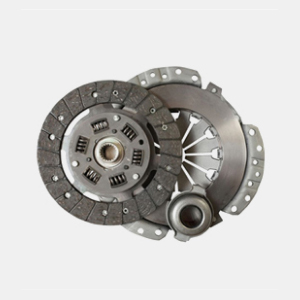-
 Afrikaans
Afrikaans -
 Albanian
Albanian -
 Amharic
Amharic -
 Arabic
Arabic -
 Armenian
Armenian -
 Azerbaijani
Azerbaijani -
 Basque
Basque -
 Belarusian
Belarusian -
 Bengali
Bengali -
 Bosnian
Bosnian -
 Bulgarian
Bulgarian -
 Catalan
Catalan -
 Cebuano
Cebuano -
 China
China -
 Corsican
Corsican -
 Croatian
Croatian -
 Czech
Czech -
 Danish
Danish -
 Dutch
Dutch -
 English
English -
 Esperanto
Esperanto -
 Estonian
Estonian -
 Finnish
Finnish -
 French
French -
 Frisian
Frisian -
 Galician
Galician -
 Georgian
Georgian -
 German
German -
 Greek
Greek -
 Gujarati
Gujarati -
 Haitian Creole
Haitian Creole -
 hausa
hausa -
 hawaiian
hawaiian -
 Hebrew
Hebrew -
 Hindi
Hindi -
 Miao
Miao -
 Hungarian
Hungarian -
 Icelandic
Icelandic -
 igbo
igbo -
 Indonesian
Indonesian -
 irish
irish -
 Italian
Italian -
 Japanese
Japanese -
 Javanese
Javanese -
 Kannada
Kannada -
 kazakh
kazakh -
 Khmer
Khmer -
 Rwandese
Rwandese -
 Korean
Korean -
 Kurdish
Kurdish -
 Kyrgyz
Kyrgyz -
 Lao
Lao -
 Latin
Latin -
 Latvian
Latvian -
 Lithuanian
Lithuanian -
 Luxembourgish
Luxembourgish -
 Macedonian
Macedonian -
 Malgashi
Malgashi -
 Malay
Malay -
 Malayalam
Malayalam -
 Maltese
Maltese -
 Maori
Maori -
 Marathi
Marathi -
 Mongolian
Mongolian -
 Myanmar
Myanmar -
 Nepali
Nepali -
 Norwegian
Norwegian -
 Norwegian
Norwegian -
 Occitan
Occitan -
 Pashto
Pashto -
 Persian
Persian -
 Polish
Polish -
 Portuguese
Portuguese -
 Punjabi
Punjabi -
 Romanian
Romanian -
 Russian
Russian -
 Samoan
Samoan -
 Scottish Gaelic
Scottish Gaelic -
 Serbian
Serbian -
 Sesotho
Sesotho -
 Shona
Shona -
 Sindhi
Sindhi -
 Sinhala
Sinhala -
 Slovak
Slovak -
 Slovenian
Slovenian -
 Somali
Somali -
 Spanish
Spanish -
 Sundanese
Sundanese -
 Swahili
Swahili -
 Swedish
Swedish -
 Tagalog
Tagalog -
 Tajik
Tajik -
 Tamil
Tamil -
 Tatar
Tatar -
 Telugu
Telugu -
 Thai
Thai -
 Turkish
Turkish -
 Turkmen
Turkmen -
 Ukrainian
Ukrainian -
 Urdu
Urdu -
 Uighur
Uighur -
 Uzbek
Uzbek -
 Vietnamese
Vietnamese -
 Welsh
Welsh -
 Bantu
Bantu -
 Yiddish
Yiddish -
 Yoruba
Yoruba -
 Zulu
Zulu
insect proof net size
Understanding Insect-Proof Net Size A Guide for Effective Pest Management
In today's agricultural landscape, effective pest control is essential for safeguarding crops and ensuring the sustainability of farming practices. Insects can wreak havoc on plants, significantly reducing yield and quality. One of the most effective and eco-friendly methods of pest management is the use of insect-proof nets. Understanding the appropriate size of these nets is critical for maximizing their effectiveness.
What is Insect-Proof Netting?
Insect-proof nets are specifically designed to create a physical barrier between crops and harmful insects. Made from high-density polyethylene or other durable materials, these nets feature tiny mesh openings that prevent insects from accessing plants while still allowing air and light to penetrate. This protection helps in reducing the reliance on chemical pesticides, making it a popular choice among organic farmers and gardeners.
Importance of Net Size
The size of insect-proof nets plays a crucial role in their functionality. The mesh should be small enough to block common agricultural pests such as aphids, whiteflies, and thrips, yet large enough to allow beneficial insects, like pollinators, to enter. Generally, the ideal mesh size ranges from 0.5 to 2.5 millimeters. However, the specific size may depend on the type of crops being protected and the prevalent local pest species.
For instance, if you are growing crops that are highly susceptible to small insects, a net with a finer mesh is recommended. Conversely, if the primary concern is larger pests, a slightly larger mesh may suffice while still providing adequate protection.
insect proof net size

Calculating The Right Size for Your Needs
When selecting insect-proof netting, it's vital to consider the dimensions of the area you wish to cover. Start by measuring the height, width, and length of your crops. Calculating the total area will help determine the quantity and size of the net required. Additionally, consider the installation method. Will the netting be placed directly on the plants, or will it be stretched over a frame? This consideration can affect the net size needed.
It's also important to account for the net's height. Crops that grow taller may require nets with greater vertical coverage to ensure complete protection throughout their growth cycle. Adjustable and elastic nets can provide versatility as plants grow and expand.
Installation Tips for Effective Use
Once the appropriate net size has been selected, proper installation becomes crucial for optimal performance. Ensure that the net is securely fastened to the ground to prevent gaps where insects can enter. Using weights or stakes can help anchor the net, especially in windy conditions. If your crops require pollination, consider leaving strategic openings or using nets with zippers that allow easy access for both farmers and beneficial insects.
Conclusion
Insect-proof netting serves as a vital tool in modern agricultural practices for managing pest populations and protecting crops. Understanding the significance of mesh size and correctly calculating the necessary dimensions tailored to your specific needs will greatly enhance your pest management strategy. By making informed decisions, farmers can enjoy healthier crops and a more sustainable farming ecosystem while minimizing the use of chemical pesticides. In essence, the right insect-proof net size is a crucial component in the journey toward effective pest control and agricultural success.
-
Shipping Plastic Bags for Every NeedNewsJul.24,2025
-
Safety Netting: Your Shield in ConstructionNewsJul.24,2025
-
Plastic Mesh Netting for Everyday UseNewsJul.24,2025
-
Nylon Netting for Every UseNewsJul.24,2025
-
Mesh Breeder Box for Fish TanksNewsJul.24,2025
-
Expanded Steel Mesh Offers Durable VersatilityNewsJul.24,2025











